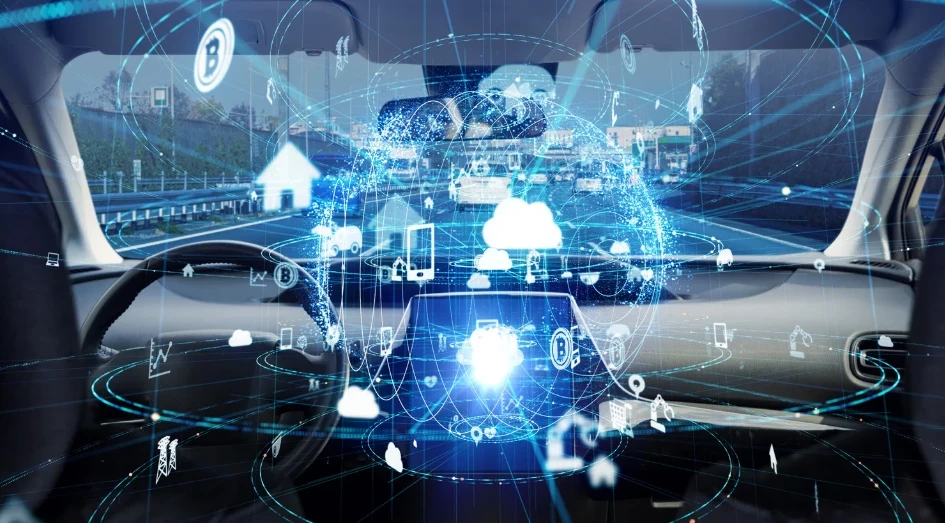Car-to-X Communication Edging Ever Closer
Add bookmarkNot just a pre-cursor to autonomous driving, car-to-car and car-to-infrastructure communication offers a variety of benefits from improved road safety to sophisticated traffic management.
‘Talking cars’ will be able to warn each other of an impending accident and take steps to avoid it, before you, the driver, are even aware of it. They will be able to manage the flow of traffic, and inform each other of accidents ahead, potential traffic jams and alternate routes.
The technology is already beginning to enter the marketplace, and significantly, the National Highway Traffic Safety Administration (NHTSA) has shown its support of vehicle-to-vehicle communication in an effort to further enhance development.
Source: Volvo
Legislation to drive V2V communication
The NHTSA announced earlier this year that it will begin taking steps to enable V2V communication, and also indicated that it is likely to introduce some form of legislation in future years making it mandatory for new cars in the U.S. to be fitted with V2V communication systems. Reports suggest that this could be as early as 2017, and the announcement gives manufacturers a very strong incentive to develop and integrate systems quickly, while helping to mitigate some of the questions about cost and consumer acceptance.
Once the legislation has been introduced, it would still take at least another decade until the majority of cars on the road have the technology and the benefits will be seen; so it is very much a long-term initiative. When this network of vehicles has been established, however, the NHTSA say that it will reduce the severity of 80% of crashes that occur when the driver is not impaired.
The noises coming out of the NHTSA can only help to speed up development of car-to-X communication, and automakers are already testing a number of innovative systems which are likely to feature in tomorrow’s cars.
Honda trialling car-2-infrastructure tech
Source: Honda
Earlier this month Honda unveiled plans to begin public road testing of its driving support system, which uses traffic signal information. The testing will take place in Utsunomiya City, Tochigi Prefecture in Japan, as part of research and development of the Universal Traffic Management System. This public road test is designed to help Honda verify system functionality as part of the final stage of verification before being put to practical use.
The system uses traffic signal information from infra-red beacons at the side of the road, as well as information from the vehicle about speed and location, to support smooth driving at intersections. When the system senses that a vehicle can drive straight through an intersection safely, it will show the recommended speed on the driver’s display to ensure safe and smooth flow of traffic. When the system senses a vehicle approaching a red light, it will display a warning to reduce speed, allowing the driver to make an early decision to decelerate. Alternatively, when the vehicle is waiting at an intersection for a green light, the system will display a timer showing the remaining red light time.
Honda says these supports will reduce the amount of unnecessary acceleration and deceleration, thus reducing accidents at intersections and improving the flow of traffic, as well as improving fuel economy.
Volvo testing cloud-based communication
Source: Volvo
Another project announced this year sees Volvo, in partnership with the Swedish Transport Administration and the Norwegian Public Roads Administration, running a pilot scheme in which road friction information from individual cars is shared in a cloud-based system.
Real-time data about slippery patches on the road is used to warn vehicles nearby, and to improve winter highway maintenance. When the car experiences an icy or slippery road, the information is transmitted to Volvo’s database via the mobile phone network. A warning is then sent to other vehicles in the surrounding area allowing the driver to take any necessary action to avoid an accident.
A warning will appear on the driver’s display alerting them to the road conditions, and Volvo say that the finished application will be designed to adapt the warning to match the severity level, based on road conditions and the vehicle’s speed.
The information will also be sent to the organisation responsible for road maintenance, to help them manage the roads and quickly adapt to changing conditions. When the information is available from a number of individual cars in real-time it could make road maintenance much more efficient, and improve overall safety for all road users.
Volvo currently has 50 test vehicles on the road and intends to grow the fleet considerably next winter, with the aim of having the technology ready for market within a few years.
Cars taking the front seat
Car-to-X communication is set to grow significantly in the next few years, and within the decade it is likely that it will be the norm rather than the exception in new vehicles. When the technology is used to its full potential cars will be in constant communication with the infrastructure and vehicles around them and adjusting vehicle controls as necessary; at this point our cars really will begin managing our journeys for us.
References:
Volvo Car Group global newsroom































